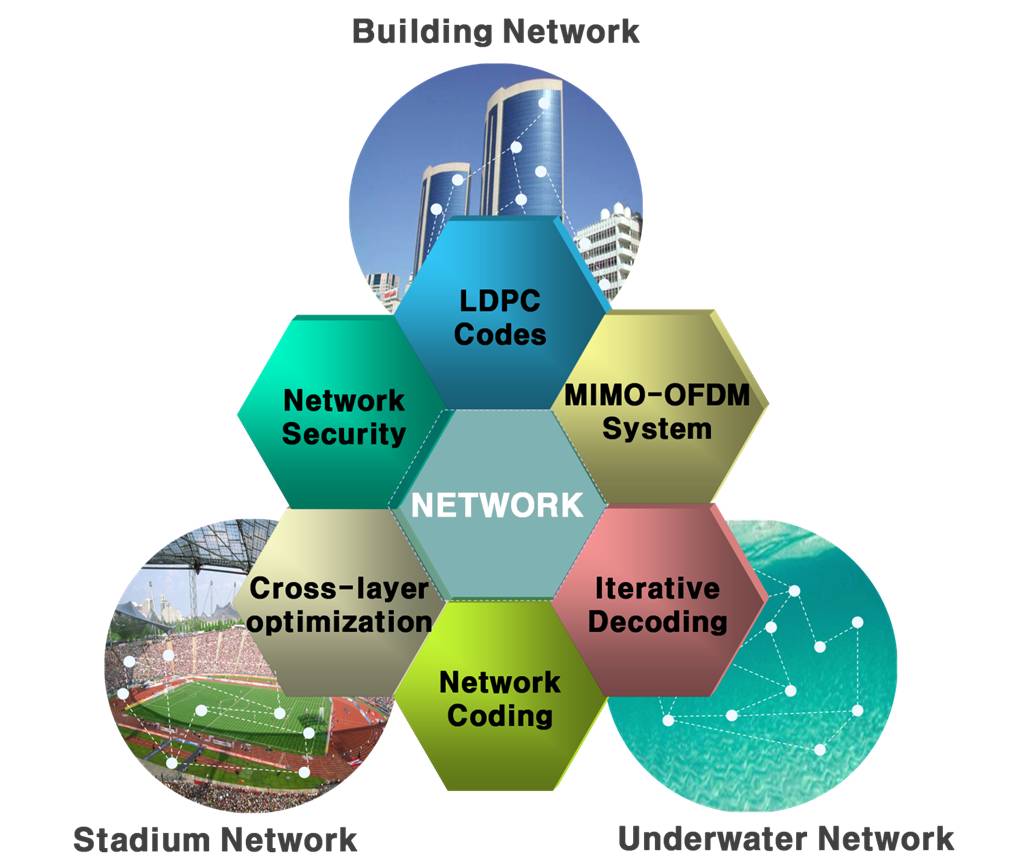Seungmin Kim
Author: Seungmin Kim
-
·
Information Theory 2013
Instructor: Prof. Heung-No Lee e-mail: heungno@gist.ac.kr 1 Introduction to information Theory, Entropy 2 Entropy, Relative Entropy and Mutual Information 3 Entropy, Relative Entropy and Mutual Information 4 Asymptotic Equipartition Property 5 Asymptotic Equipartition Property / Entropy Rates of a Stochastic Process 6 Entropy rates of Markove Chain 7 Data compression 8 Channel capacity Midterm 1…
-
Labmeeting Presentations
Labmeeting presentation No Speaker Presentation 1 Sangjun Park 20130123_pdf 2 Jintaek Seong 3 Woongbi 4 Seungchan 20130813_pdf 5 Hwanchul 6 Asif 7 Evgenii 8 Pavel (pdf) 9 Oliver 10 Jeongmin (pdf) 11 Nitin 12 Zafar 13 Sangseon 14 Soogil Woo (pdf) 15 Hyeongho Baek (pdf) 16 Younghak Shin PPT
-
Links
GIST Main page of GIST School of Information and Communication GIST Portal System GTI MIS 연구공동활용장비(Research Facilities) Society IEEE Information Theory Society 한국통신학회 (KICS) 대한전자공학회 (IEEK) Projects NRF 지식경제부 통합시스템 Online Courses Coursera Artificial Intelligence (Udacity) Introduction to Mathematical Thinking Interesting Links MYO – Wearable Gesture Control from Thalmic Labs Google Glas Official Promo Google Glass –…
-
Application Group
Application group seminar materials November 2014 No Date Title Speaker Presentation Discussion 1 2014-11-14 Dry and Noncontact EEG Sensors for Mobile Brain–Computer Interfaces Seungchan pdf Conventional BCI systems have always relied on laboratory bound instrumentation and often require extensive subject preparation, including scalp abrasion, gels and a multitude of wired electrodes. For truly mobile…
-
Seminars
Schedule and Group teams: Topics Names Optics Hwanchol Jang, Nitin Rawat BCI (Brain Computer Interface) Younghak Shin, Seungchan Lee, Evgeni Kim Medical Ultrasound Pavel Ni, Jintaek Seong Spectrometer Woongbi Lee, Sangjun Park (Image Processing) Topics Names Underwater Acoustic Channel Zafar Iqbal Network Coding Jintaek Seong, Jeongmin Ryu, Woongbi Lee, Jusung Kang, Jongmok Shin, Haeung Choi…
-
Information and System Group
Information and System Group seminar materials November 2015 1 2015-11-27 Support recovery with orthogonal matching pursuit in the presence of noise Jang Jehyuk PDF In this paper, sufficient and necessary conditions for correct recovery of sparse solution using OMP under the noisy environment are provided. In addition, upper bound of the error rate in recovering is…
-
·
Channel Coding Theory 2013
Channel Coding Theory Instructor: Prof. Heung-No Lee e-mail: heungno@gist.ac.kr 1 Introduction to Channel Codes (Shannon’s 1948 paper) HW#0 2 Galois Fields HW#1 3 Polynomials over Galois Fields HW#2 4 Linear Block Codes 5 Linear Block Codes HW#3 6 BCH and Reed-Solomon Codes HW#4 7 BCH and Reed-Solomon Codes 8 Midterm Week Midterm 9…
-
·
Introduction to Compressed Sensing 2016
Introduction to Compressed Sensing Instructor: Prof. Heung-No Lee Email: heungno@gist.ac.kr This course was offered in the Spring semester 2011 at GIST. Here is the lecture note Book_CS.pdf for this course. Here is the presentation of professor Heung-No Lee presented at PSIVT 2011 Overview of Compressed Sensing Course Syllabus 1 Introduction to Compressive Sensing, Shannon Nyquist…
-
·
Wireless Communications 2012 [IC6207]
The Complete Lecture Note on Wireless Communications Instructor: Prof. Heung-No Lee e-mail: heungno@gist.ac.kr 1 General overview (Shannon’s 1948 paper) 2 Optimal Transceiver: Vector Space Representation of Signals 3 Gallager’s Channel Coding Theorem 4 Gallager’s Channel Coding Theorem 5 LDPC codes and probabilistic decoders 6 Multipath fading channels / Diversity systems …
-

Information Networks
updated by Jintaek Seong (2012. 12.27) Ultimate goal : Design intelligent wireless networks with efficient use of limited resources and self-organizing, and self-sustained capability Research Area
